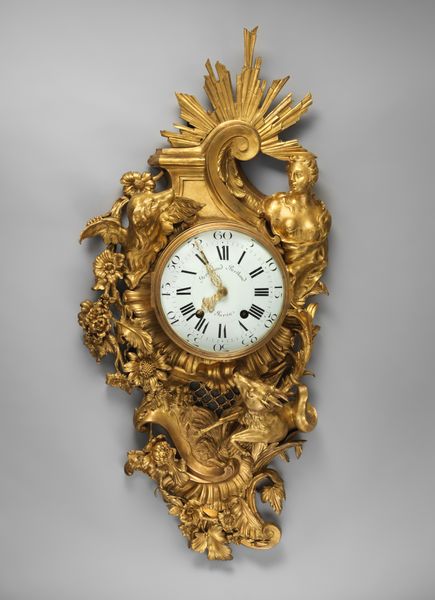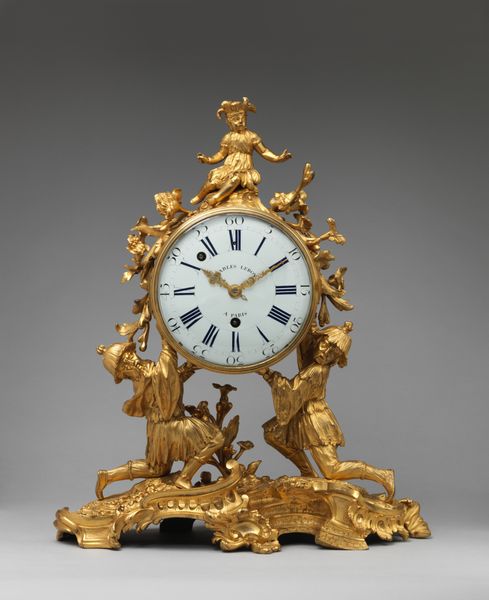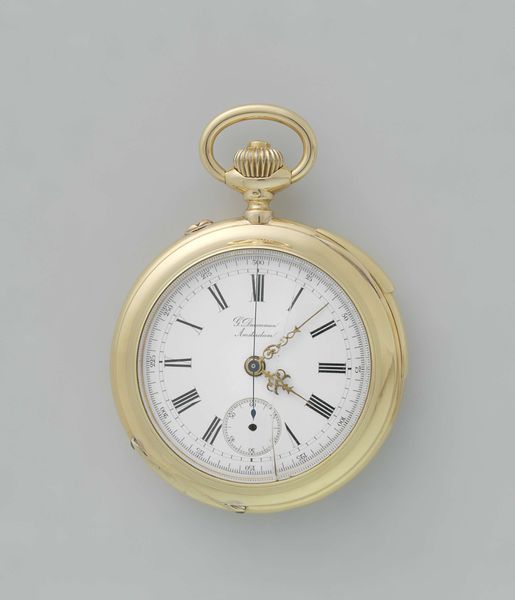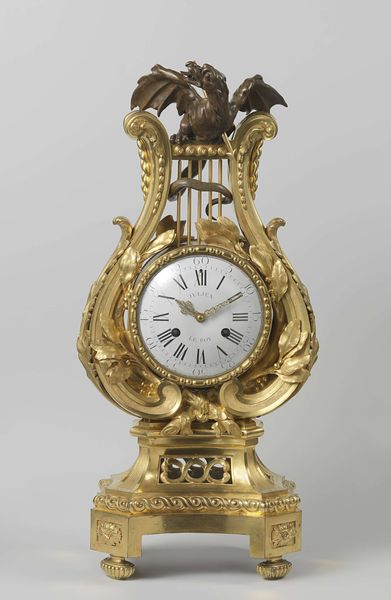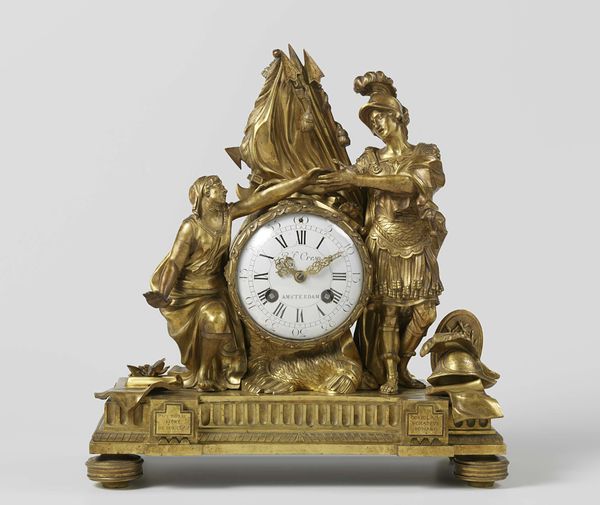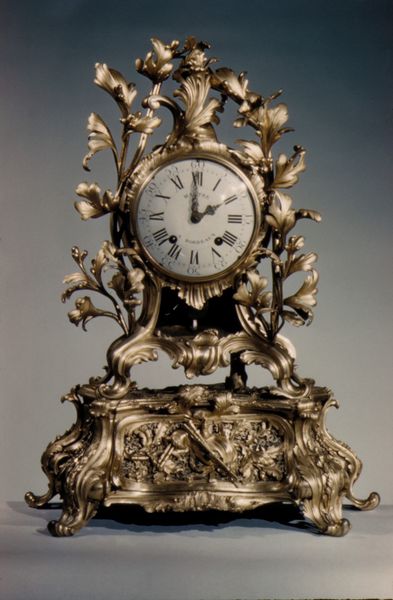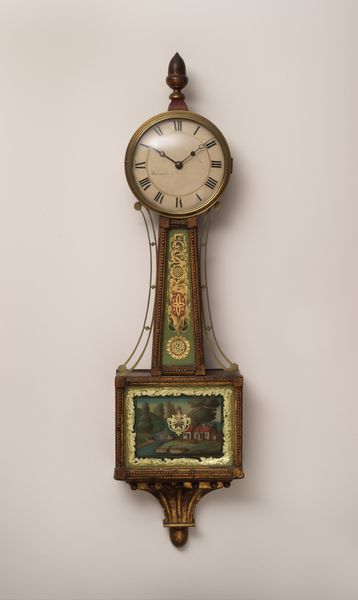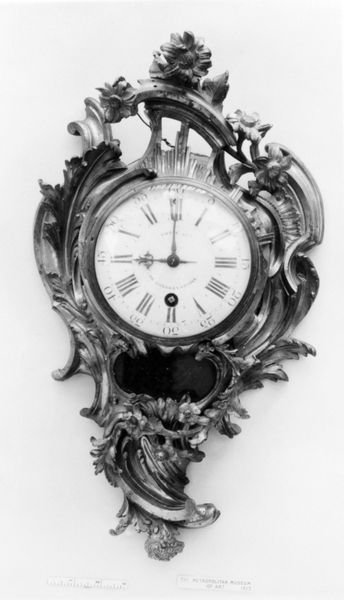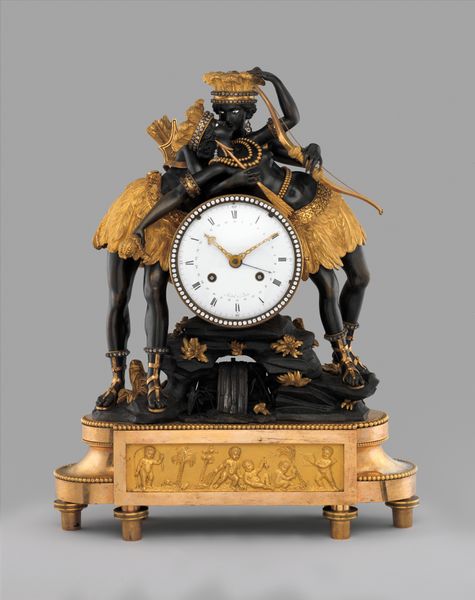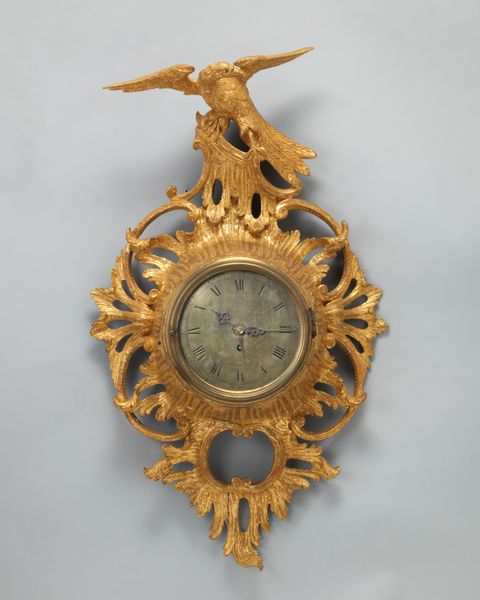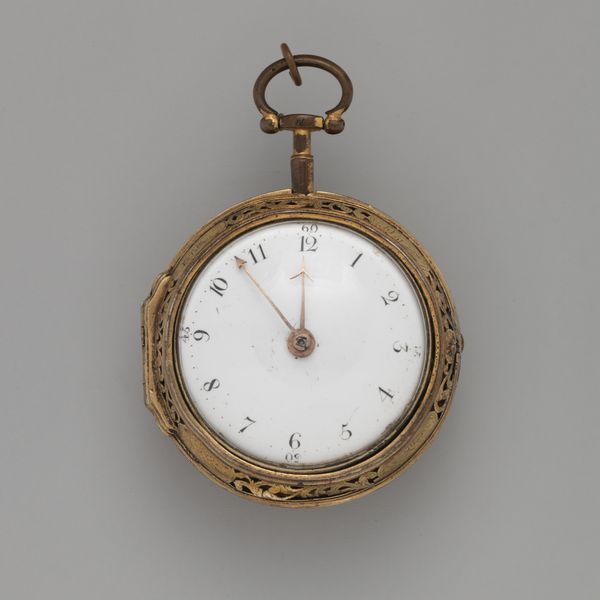
Dimensions: height 102.5 cm, width 75.5 cm, depth 25 cm
Copyright: Rijks Museum: Open Domain
Jan Swart crafted this cartel clock, and its gilt wood frame is dominated by an allegory of time. A cherubic figure, often associated with innocence and the beginning of life, sits atop the clock, holding aloft a tablet, with a scythe resting in his other hand. Here, the scythe, an attribute of Chronos, and later the Grim Reaper, traditionally signals the inevitable passage of time and mortality. In ancient Roman art, Chronos was often depicted holding a scythe, a visual symbol adopted and reshaped through Renaissance and Baroque art. This fusion of youth and mortality creates a powerful psychological tension. It reminds us, perhaps uncomfortably, that time marches on, inexorably linking birth and death. The cherub's innocent face contrasts sharply with the deadly scythe, embodying the anxieties of time's fleeting nature. This symbolism is cyclical, constantly resurfacing and adapting across centuries. The image retains its ability to provoke contemplation on our existence, highlighting the non-linear, continuous dialogue between past and present.
Comments
rijksmuseum about 2 years ago
⋮
In 1788 the Felix Meritis Society moved into its own grand, Neoclassical edifice on Amsterdam’s Keizers-gracht, built to designs by the architect Jacob Otten Husly. This wall clock was made a few years later for the large anteroom on the main floor. Husly designed a variation of a French type. The little boy holding a scythe symbolizes Time.
Join the conversation
Join millions of artists and users on Artera today and experience the ultimate creative platform.
